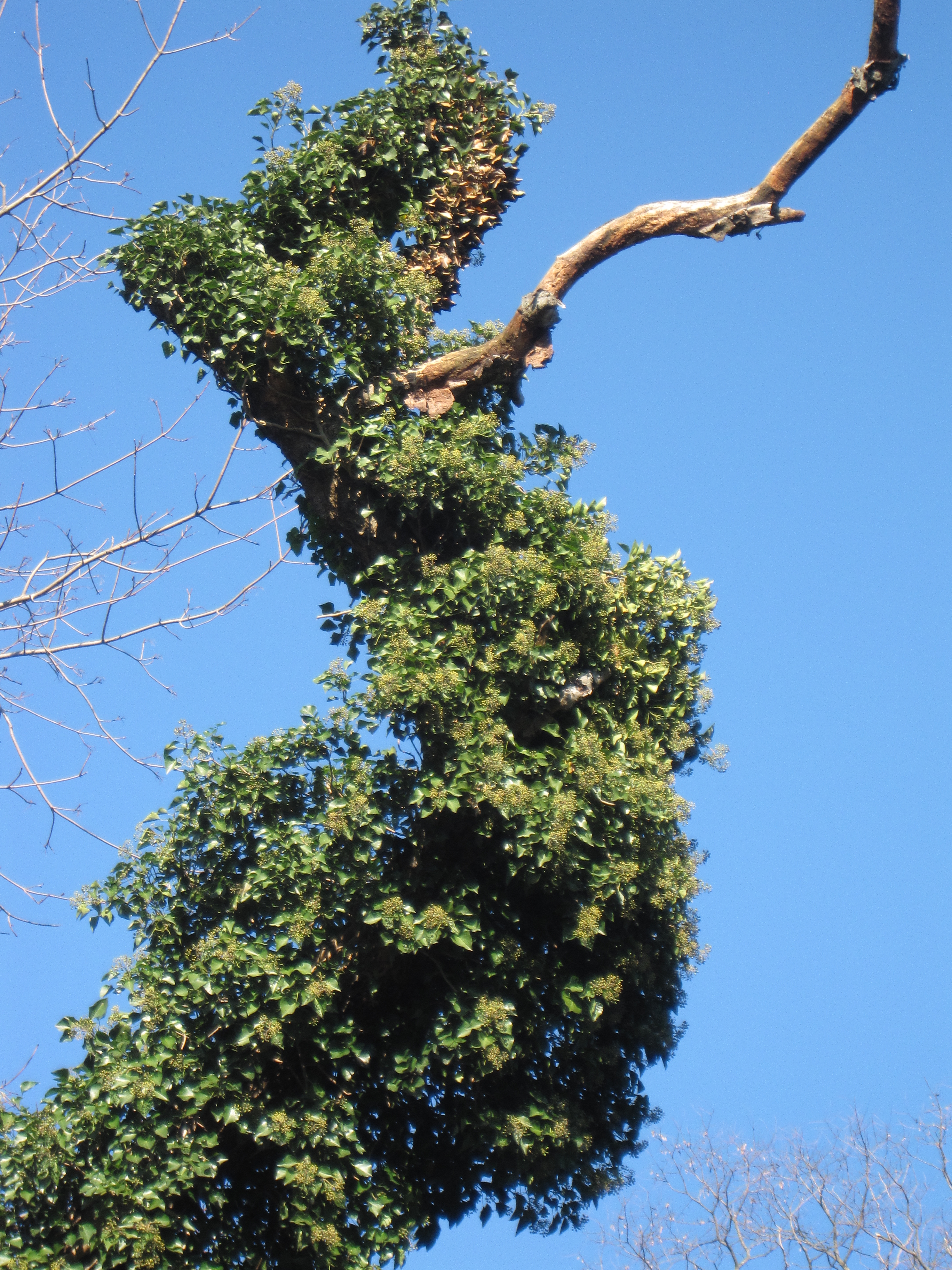A tree engulfed in English Ivy will exhibit decline for several to many years before it dies. Ivy obscures light for photosynthesis from reaching the leaves, and the added weight of vines makes younger trees and branches susceptible to blowing over during storms. English Ivy also has the ability to create “ivy deserts” across landscapes. The leaves and dark green berries of English ivy — berries mature at the tree canopy in January — can be toxic to birds, other wildlife and even humans. Children are especially susceptible to this plant’s poison. Ingestion can cause delirium, stupor, convulsions, hallucinations and fever, and for some, contact with its leaves can cause skin irritation, itching, rash and blisters. Wearing heavy gloves, long sleeves and long pants, cut the vines near the foot of the tree, and pull/cut them from the ground for at least 2 feet around the tree. Click Vine Removal for details. Cut vines can be left in place to air dry. Often embedded in trees, thick vines of mature English ivy — with hairs similar to those of poison ivy — can be cut with a limb saw, hammer and chisel, and removed. Specifically, at a foot or two above the ground, cut these large vines in two locations along the vine about five inches apart. Carefully remove the severed section without damaging the tree. It could take a year for the upper vines to die, when it may be possible to remove the lower portion down to and along the ground. For removing large patches of ivy runners from along the ground, start at the farthest point from the root and, using pruners or a pair of large household pliers, grab and pull each runner for as far as possible. Continue to release each runner from the ground and snip. Repeat to where the runner originates at the root, extract the root, gather the runners, and flip them occasionally to desiccate. This method is quick and effective. Another option for the English ivy along the ground is to smother it by sheet mulching. Lay corrugated cardboard or thick layers of newspaper plus layers of compost, straw and wood chips to kill it. The mulch should stay in place for at least two growing seasons and may need to be augmented several times.

